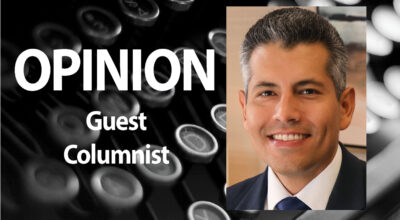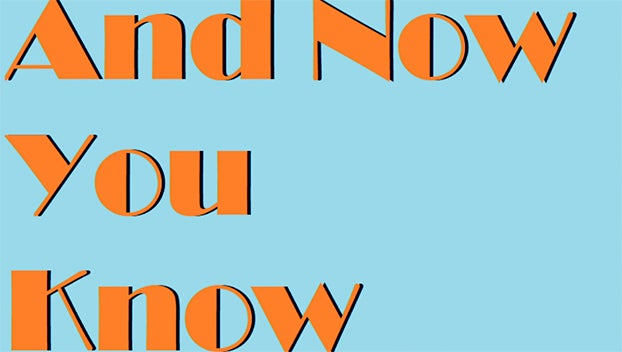‘Fake News’ Back When?
Published 9:42 pm Friday, October 20, 2017
Commentary by Dr. Don Newbury
Sometimes, a random thought crosses my mind (admittedly, it’s usually a rough crossing), and there’s no guarantee of safe arrival to the other side. Such thoughts often bob up and down like a fishing line cork that’s way too big, thus giving a six-year-old fisherperson mixed signals as to whether the time has come to “land” a four-inch perch. (Mixed signals–like fake news–can be hard to interpret.)
A puzzling thought struck me the other day. At first, it seemed to have the innocence of a lazy butterfly landing on a blossom to suck it dry.
I say this to indicate that my “train of thought” was on a random sidetrack. (My wife always counters, “Train of thought? You flatter yourself. You don’t even have a caboose of thought.”)
The name “Johnny Appleseed” kept rattling around in my mind. Did he ever REALLY live, or should he be remembered like Santa Claus, the tooth fairy and the Easter bunny?
Thoughts of this historical figure wouldn’t go away. They reminded me of conversations with my wife that occur at least daily. One of us names a longtime friend. Then the other responds as to whether the said friend is dead or not. And if so, did we go to the funeral?
Luckily (or, in this case, perhaps unluckily), Dr. Google is in bit-chomping mode, ready to reveal much about Johnny Appleseed. The more I read, the more it seemed he was eccentric to the max in many ways, with the “much good” in him made even better by a Walt Disney film. He seemed to be more saint than scoundrel, this “Johnny” whose last name was really Chapman.
There is ample evidence to identify him both as humanitarian and a huckster. I’ll leave it to you to decide.
Indeed he went about planting apple orchards, but some of them, it seems, were the result of a government program that was to his liking.
One puzzlement is that he favored wild apples that often were called “spitters” by those attempting to eat them. However, they were great for “cider stills” that dotted the countryside, albeit somewhat camouflaged when many Americans described alcohol as the devil’s brew.
The further we are removed from his era (1774-1845), the more likely we are to glow with remembrances of “warm fuzzies” rather than “cool pricklies.”
There are two Johnny Appleseed Museums, and in Fort Wayne, IN, stands a statue in his memory. To my knowledge, no one is clamoring to close the museums, or threatening to drag the statue away.
He was “part preacher,” and preaching was what the arborist did when he wasn’t planting trees or walking to the next meadow. He espoused a religion popularized by a theologian named Emanuel Swedenborg. His mentor, a philosopher and scientist, had a spiritual awakening at age 56 and authored numerous theological books. He claimed to be an authority on both heaven and hell. (Keep in mind that these men lived long before global warming, back when hell’s temperature was at an all-time high.)
There. I’ve done it again. Writing about a topic I now know more about than I need to and have brought to light far more questions than answers. Herein are shared substantial truths, interspersed with the stuff from which myths are made. Admittedly, I did resort to the Internet to determine Dr. Google’s findings. Alas, they, too, are only partially conclusive.
I pray to have suggested neither vilification nor sanctification. You are left to reach your own conclusions. As my wife always claims, most worthwhile conclusions are far out of my reach. We believe, though, that Old Johnny really lived; after all, a five-cent US postage stamp was issued in his memory.
No doubt, he did considerable good along the way. And we are absolutely certain we didn’t attend his funeral. So, I depart this column whistling “Johnny Be Good.” How do you like them apples?
Dr. Don Newbury is a speaker in the Dallas/Fort Worth Metroplex. Inquiries/comments to newbury@speakerdoc.com. Phone: 817-447-3872. Web site: www.speakerdoc.com.





